Impulsive M4.5 solar flare erupts from Region 2297
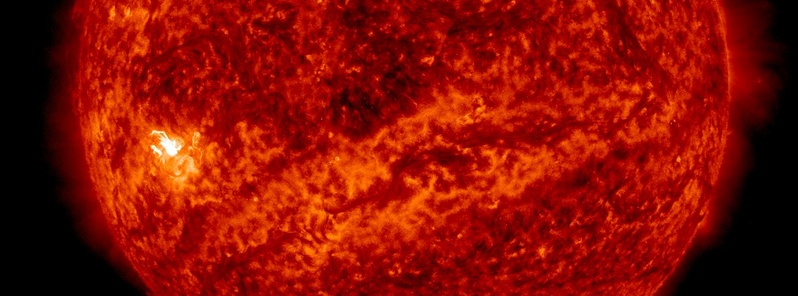
An impulsive solar flare measuring M4.5 at its peak time erupted from Region 2297 at 14:33 on March 9, 2015. The event started at 14:22 and ended at 14:37 UTC.
There were no radio signatures that would suggest a Coronal Mass Ejection was produced.
This region is rotating toward the center of the disk and into a more geoeffective position.
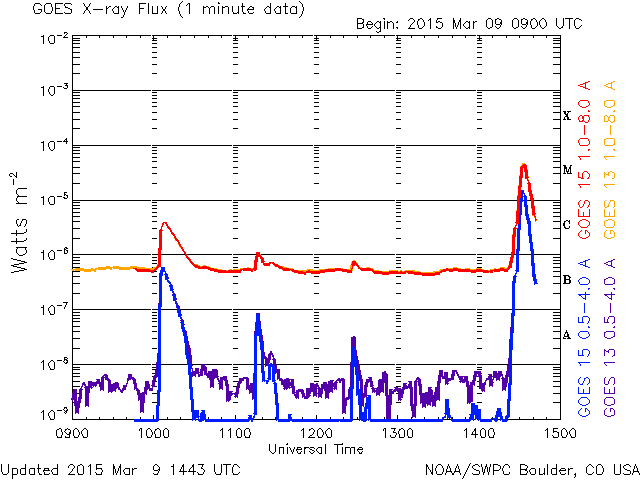
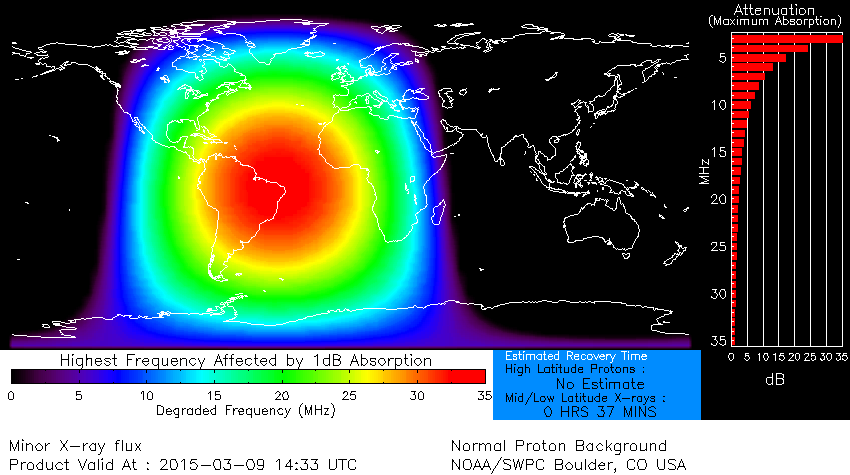
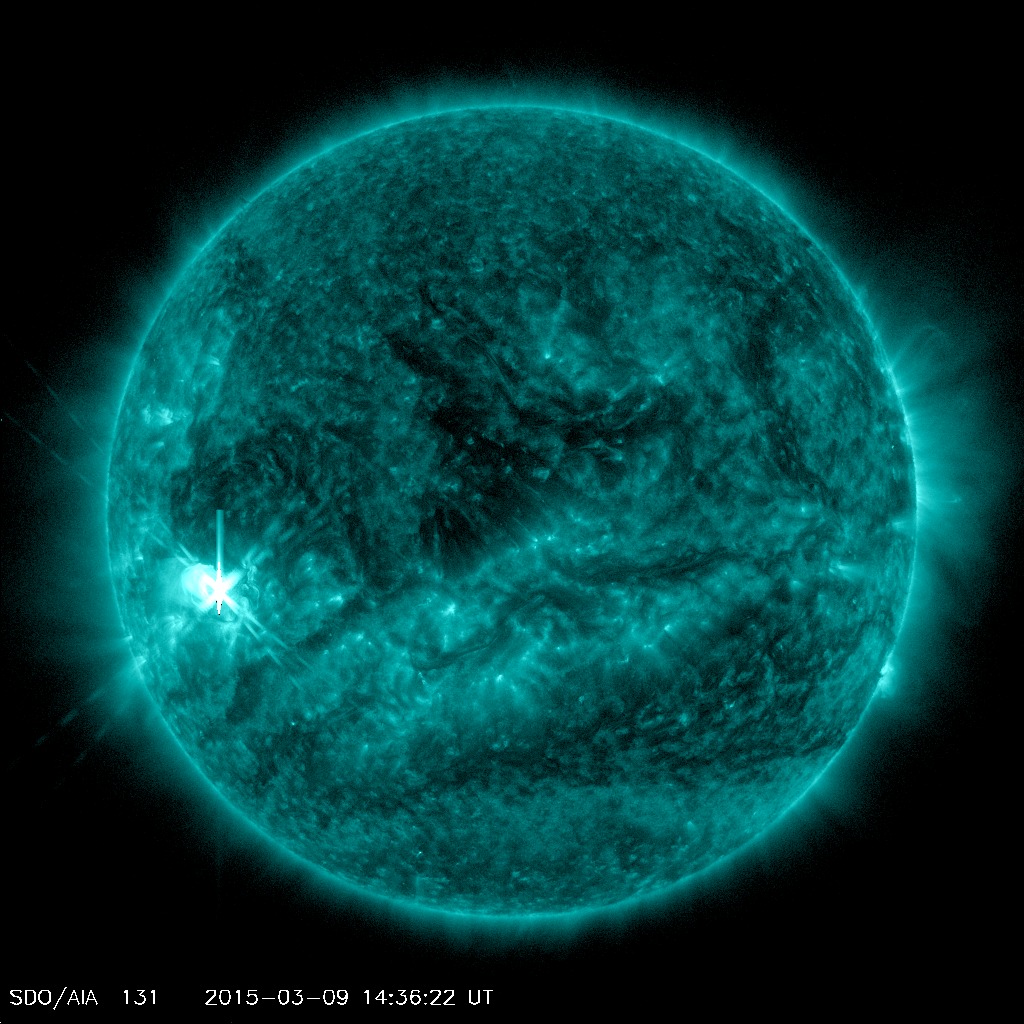
Space Weather Message Code: ALTEF3
Serial Number: 2157
Issue Time: 2015 Mar 08 1512 UTC
ALERT: Electron 2MeV Integral Flux exceeded 1000pfu
Threshold Reached: 2015 Mar 08 1455 UTC
Station: GOES-13
NOAA Space Weather Scale descriptions can be found at
www.swpc.noaa.gov/noaa-scales-explanation
Potential Impacts: Satellite systems may experience significant charging resulting in increased risk to satellite systems.
Sunspots
Region 2297 is currently the only numbered sunspot region on the Earth side of the Sun.
Slight decay was observed in its smaller leading spots during last 24 hours.
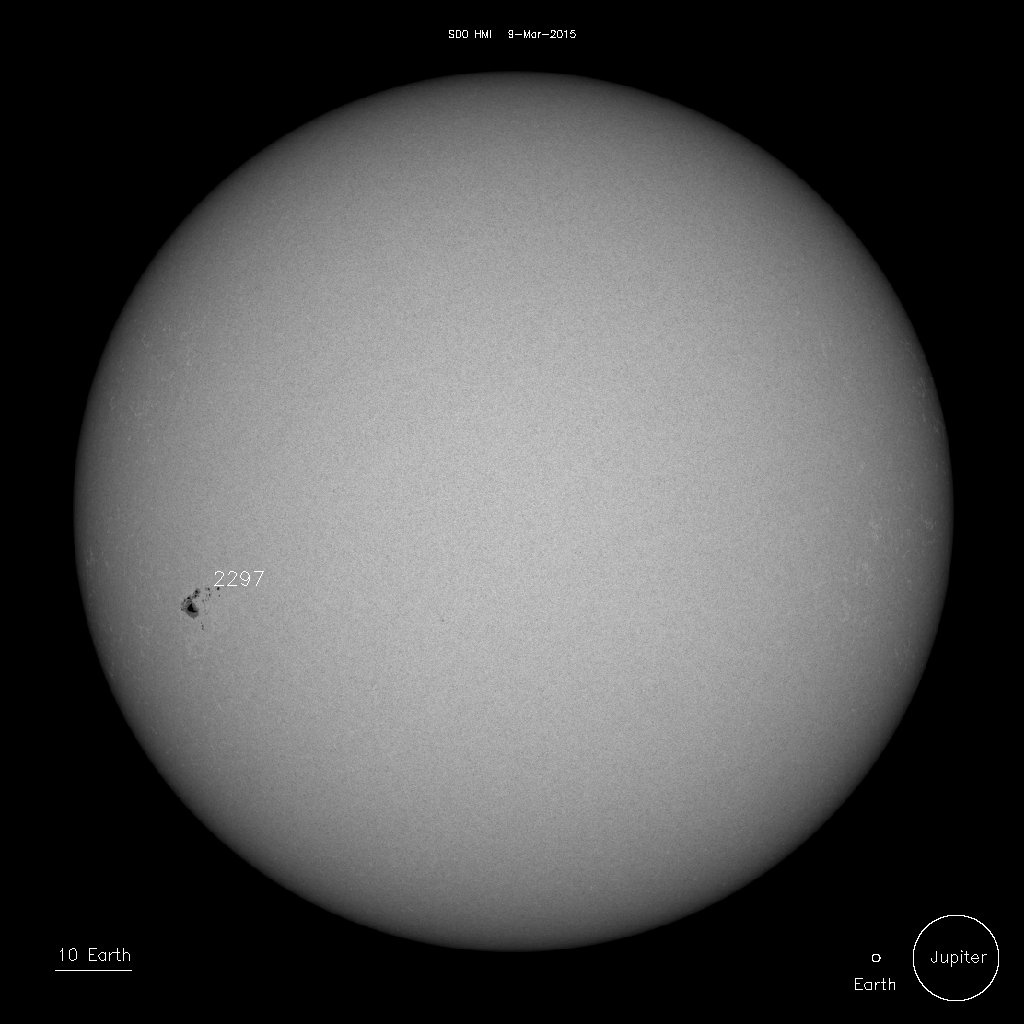
Sunspots on March 9, 2015. Image credit: NASA SDO/HMI
2297 – Beta-Gamma-Delta
Forecast
Solar activity is expected to be low with a chance for M-class (R1-R2/Minor-Moderate) flare activity and a slight chance for X-class (R3 or greater) flare activity over the next three days (March 9 – 11), SWPC said in their Forecast Discussion issued 12:30 UTC today.
The greater than 2 MeV electron flux is expected to be at normal to high levels over the next three days. There is a slight chance for S1 (Minor) solar radiation storms during the same period if Region 2297 continues to produce significant flare activity.
Solar wind parameters are expected to remain enhanced on March 9 and 10 due to continued coronal hole high speed stream (CH HSS) influence with a return to near-background levels expected to begin on March 11 as CH HSS effects subside.
The geomagnetic field is expected to be at quiet to active levels today and tomorrow due to CH HSS influence with quiet to unsettled levels returning on March 11 as CH HSS influence wanes.
Featured image: NASA SDO/AIA 304 at 14:33 UTC on March 9, 2015.

I would be curious to know how the solar flares effect the geomagnetic currents and Teutonic plates . Seems to be a connection , love some thoughts on that